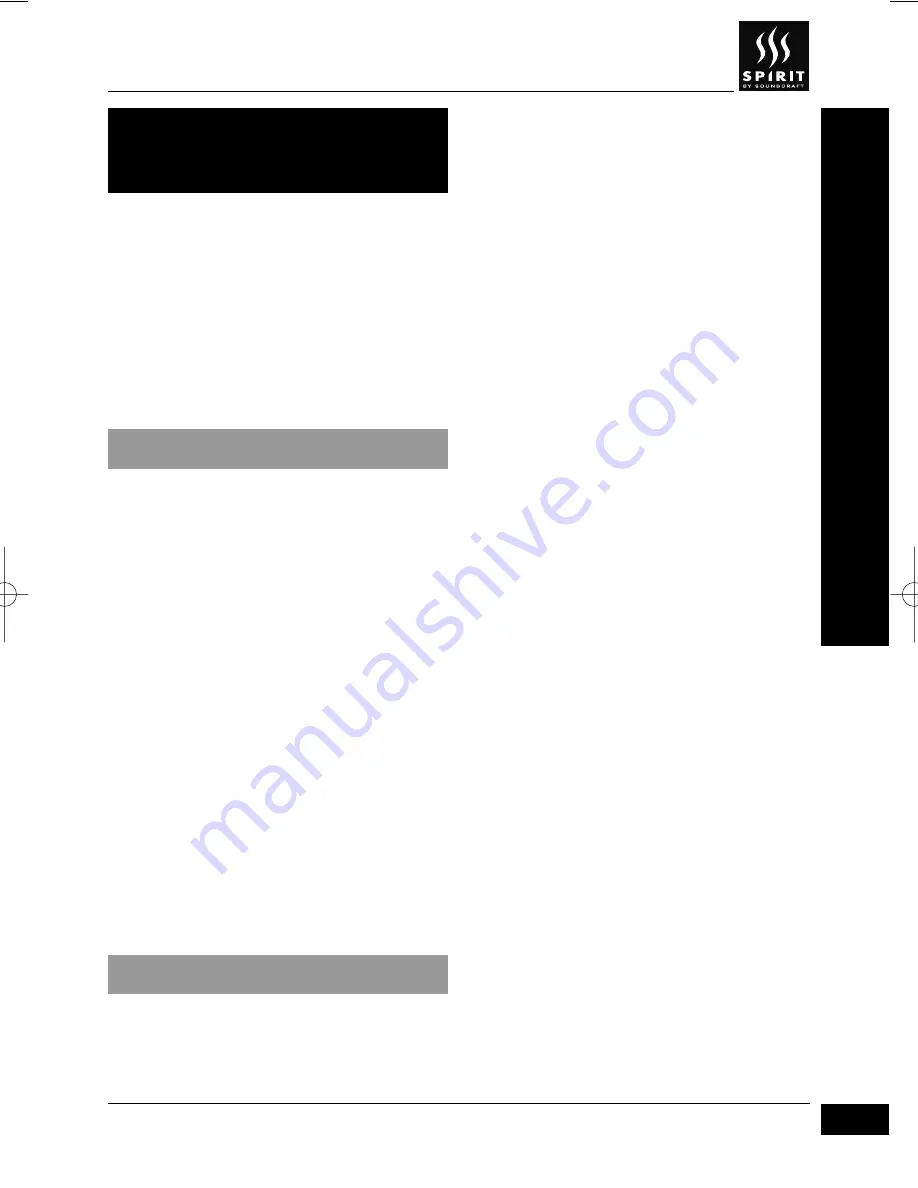
Although on the inside the way that a digital mixer
works is quite different to the way that an ana-
logue mixer works, they do the same job com-
bining your various audio sources, mixing and
controlling them on their way to whatever outputs
you need. In some applications, the advantages of
a digital mixer are directly connected with the way
that it works inside, in other applications the
advantages are less obviously connected to its digi-
tal nature.
A. Keep Music Digital
In a typical audio chain, the sound of an instru-
ment or voice may pass through a mixer several
times before it makes it way to a pair of speakers
or headphones once on its way to a digital
recorder, then back through the mixer again dur-
ing mixing, out and back in via an effects loop,
and so on. Now that so much of the equipment
around the mixer is digital, if the mixer offers only
an analogue signal path then the audio may go
through many steps of conversion between ana-
logue and digital, losing a little quality each time.
With a digital mixer, however, you can transfer
audio to and from your digital multitrack, and to
and from digital effects units, entirely in the digi-
tal domain. Many synths and samplers now offer
digital outputs, and a digital mixer can also add
effects, and perform dynamic processing, all with-
in going back out to analogue. By cutting out
unnecesary conversion steps, your recordings can
stay in the digital domain from the moment they
come into the desk to the moment they come out
of a CD player, ensuring the best possible quality.
B. Take Control Of Your Mix
One of the basic features of analogue mixer con-
struction is that all of the hardware controls are
also audio components. When you move a chan-
nel fader, youre changing the resistance in an
SECTION
2: The Benefits Of Digital Mixing
7
audio component in the signal path. When you
move an EQ knob, youre tweaking a variable pot
that is part of a channel strips EQ circuitry. With
a digital mixer things work completely differently.
The audio processing takes place in chips that are
not directly linked to any controls, which presents
a great opportunity for designers to create new
interfaces for their products, freed from the slav-
ery of one-control-per-function. Because the
audio handling and control aspects of the desks
are now separate, each can be made to work as
well as possible, rather than there being any com-
promise. And contrary to popular belief, theres
no need for a digital mixer to behave like a com-
puter, relying on menu-driven interfaces rather
than intuitive controls.
Although it would be possible to create a digital
mixer with a control for every parameter, such a
design would be much more expensive than one
in which fewer assignable controls are used. The
Spirit Digital 328, for example, uses clearly laid-
out assignable controls, and behaves like a tradi-
tional mixer rather than a computer. All major
desk operations can be achieved with a few simple
and intuitive control inputs, and you hardly ever
need to refer to the LCD screen. Nonetheless, you
have the flexibility that comes with controls that
can change at the touch of a button one minute
youre adjusting levels, the next you're sending
out MIDI controller messages. And if you want to
go beyond the 328s own control surface, you can
use any major sequencer program running on
any computer platform to map the Spirit 328 con-
trols to on-screen graphic controls.
Because a layer of software sits between the
physical controls and the audio processing of a
digital mixer, it is relatively easy to add advanced
features such as automation and remote MIDI
operation, all of which gives you more mixing
control. The two types of automation that you find
on digital mixers are snapshots which store all
the desks audio settings and can be recalled at
the touch of a button or against timecode and
dynamic automation, in which you can record
and playback any and all of the fader and other
control changes that you make.
THE BENEFITS OF
DIGITAL MIXING
Guide.qxd 02/03/1999 11:25 Page 7






































